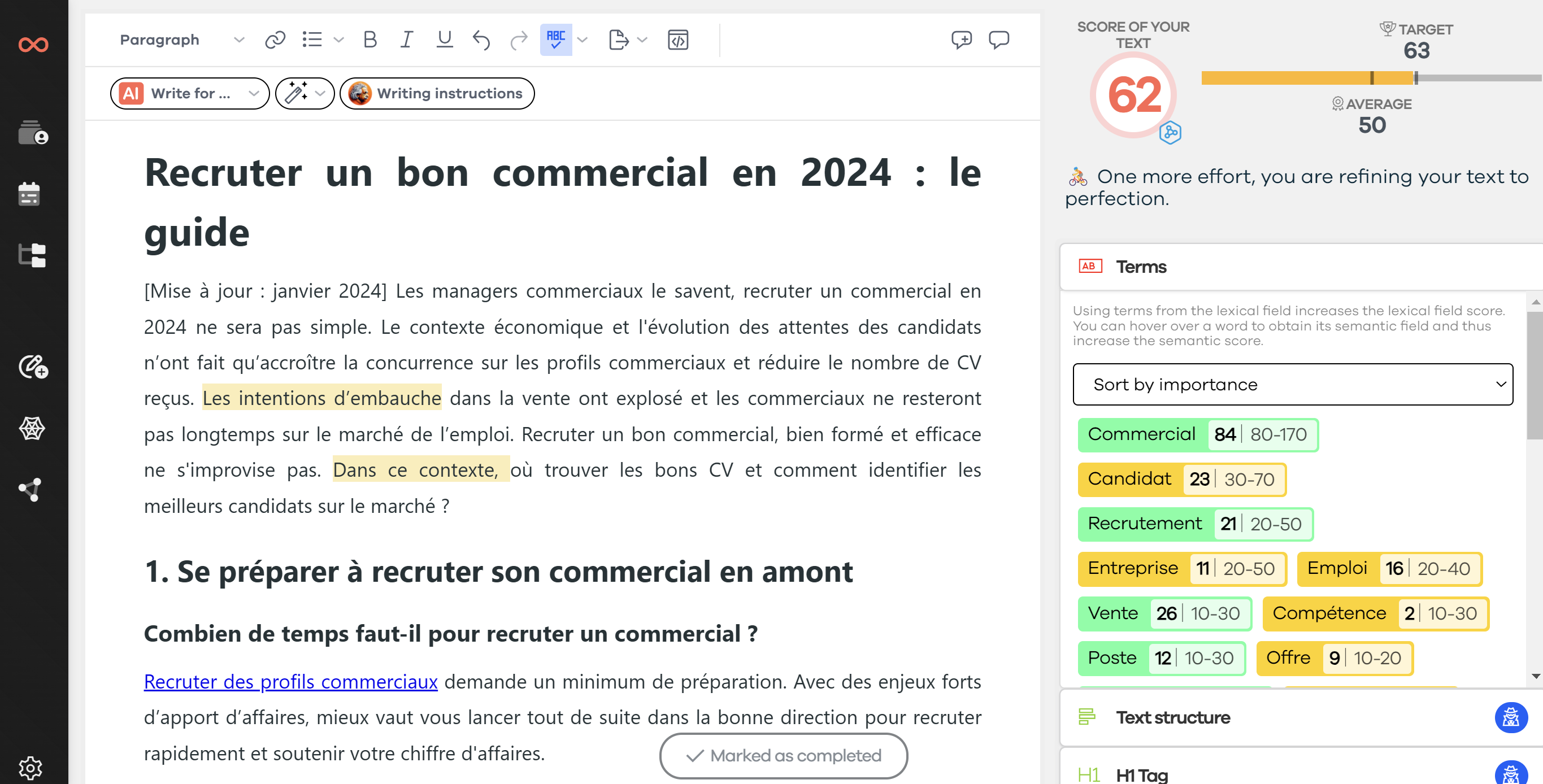Have you ever heard of Google MUM? Certainly, as the announcement of an algorithm update stirred up the entire SEO community in the spring of 2021! Hidden in these three letters is the acronym "Multitask Unified Model". But what are the new features proposed that could revolutionize organic SEO in the coming years? And how can we adapt our online visibility strategy? Let's gather all the information we have at our disposal and try to find the solutions!
🌱 What's new with Google MUM?
In May 2021, Pandu Nayak, Vice President of Search at Google, officially announced the creation of a new algorithm: Google MUM. Based on ultra-high-performance artificial intelligence, this update is presented as being a thousand times more powerful than Google BERT! So, we can certainly say that we are on the verge of a revolution in SERP display and, more broadly, in SEO. But what were the new features announced at the Googleplex in Mountain View?
Providing answers to complex queries

The primary goal of this Google algorithm update is to be able to answer complex queries. Indeed, on average, internet users need to make eight searches to find an answer to a complicated question. Moreover, more than half of the queries are more than four words long. And this is not going to decrease with the relentless evolution of voice search! Another striking point, 15% of daily queries have never been searched on Google.
Google's experts have therefore rolled up their sleeves to adapt the algorithm to this new reality! During the presentation of Google MUM, the following query was taken as an example: "I hiked Mount Adams and I want to hike Mount Fuji next fall, how should I prepare differently?". You'll agree that this is indeed not a classic SEO query and there's little chance that a web page is optimized in this sense! Yet, Google, which is definitely moving towards a response engine, is trying to find the solution to satisfy its user.
To be able to perfectly respond to the search intent, Google's new algorithm is developed on three axes. I briefly present them below and will develop them in the following paragraphs.
- Multilingual: analyzes results in 75 languages.
- Multimodal: compares not only textual information but also images. In the future, this should also include video and audio content.
- Multitask: processes multiple tasks simultaneously (analyzes different content, results in multiple languages, and provides a response).
Finally, the last announcement of how Google MUM will be able to provide answers to complex queries is a bit scary... The algorithm will be able to understand the way humans communicate and their way of interpreting results. Is the robot psychologist soon to be a reality? To be continued...
Multilingual: eliminating language barriers

As you may have already understood, Google MUM wants to end language barriers to be able to provide complete results, regardless of the query. Wherever you are in the world, the new technology used will be able to gather all the results, regardless of the language used. If we take the query given earlier as an example, it is certain that quality results will be in English and Japanese, or even in other languages. But this no longer worries Google!
Thanks to Transformer, the neural network architecture developed by the search engine in 2017, there are no more language limits. Google MUM can thus transfer knowledge from sources in multiple languages. At the same time, the quality of instant translation has also been greatly improved. This will therefore allow providing relevant results in all languages.
Multimodal: understanding different types of information

Not only will Google's next algorithm be able to analyze different types of content (text, images, videos, and audio), but it will also be able to process queries in multiple formats. This will be possible thanks to Google Lens. This tool allows you to take images and use them as a query. In fact, as I write these lines, I notice that the tool has been added to the Google search bar on my smartphone... Here is the result I get when using it on my notebook.

But with Google MUM, the evolution will go even further! Indeed, it will be possible to add a textual query to the image. To illustrate this example, Google shows a photo of a pair of shoes adding the search "can I use these shoes for a hike on Mount Fuji?". The search engine will thus understand the search intent and will be able to provide an answer to the question based on the information obtained on the Internet. Results proposing blogs talking about hiking shoes will also be added to the SERP.
Multitask: providing instant and relevant results

Even though it has always been the case, Google is trying to further improve the quality of result pages without any delay. When you type a query in the search bar, the algorithm simultaneously takes into account your user data and its database to display a relevant response almost instantly. But with Google MUM, it goes even further!
In addition to what Google already does, the future algorithm will have the ability to perform even more tasks at the same time.
- Grouping of keywords
- Multilingual analysis
- Search in all types of content (texts, images, videos, and audios)
- Translation
It is on this axis of improvement that Google has decided to focus, hence the aptly named Google MUM: Multitask Unified Model.
💱 How to adapt SEO to Google MUM?

It is difficult to know in advance the consequences of a Google algorithm update. Once again, in SEO, only experience will allow us to adapt to the perpetual evolution of the ranking criteria of the most popular search engine.
In general, however, the evolution that SEO has undergone in recent years always points in the same direction. To rank your site on the first page of Google, you will therefore need to continue to focus on the essential points of content creation.
- Improve the user experience (UX) by focusing primarily on the comfort of the user.
- Provide quality content to best respond to search intent.
- Perfectly meet the expectations of readers by developing your topics in a comprehensive way and using an exhaustive semantic field.
- Focus on EAT criteria: Expertise, Authority, Trust.
- Develop the relevance of your website using keyword clustering.
- Take care of the optimization of videos, images, and podcasts.
⏱ When will Google MUM be released?

As usual, Google's spokespersons remained very vague about the announcement of the release date of the new algorithm. They simply told us that Google MUM is currently in the testing phase, just like Google BERT was.
They are therefore checking that the artificial intelligence used respects their principles of responsibility and respect for the environment, while ensuring its effectiveness. As a result, they announce the implementation of the algorithm in the coming months and years. Which, you'll agree, doesn't help us much!
The only thing we can do for now is to prepare for this SERP revolution. Review each point in the list of SEO optimizations proposed above. If necessary, try to refresh your content that has good organic SEO potential. Forewarned is forearmed, and this is especially true with Google updates!
What should you absolutely remember about the new Google MUM algorithm? In summary, this new algorithm will:
- gradually replace Google BERT (1,000 times more powerful!);
- answer extremely complex queries;
- work in a multitask manner;
- analyze content in a multimodal way (texts, web images, videos, and audios);
- group results in 75 languages;
- be implemented in the coming months and years.
Ultimately, the most important thing remains to provide quality content, ensure that technical factors are optimal, and develop the reputation of your site. In short, let's continue to work on our SEO in the most respectful way possible to stay visible on the Web! To help you in this task, don't hesitate to (re)discover the 204 Google ranking criteria.
Need to go further?
If you need to delve deeper into the topic, the editorial team recommends the following 5 contents:

